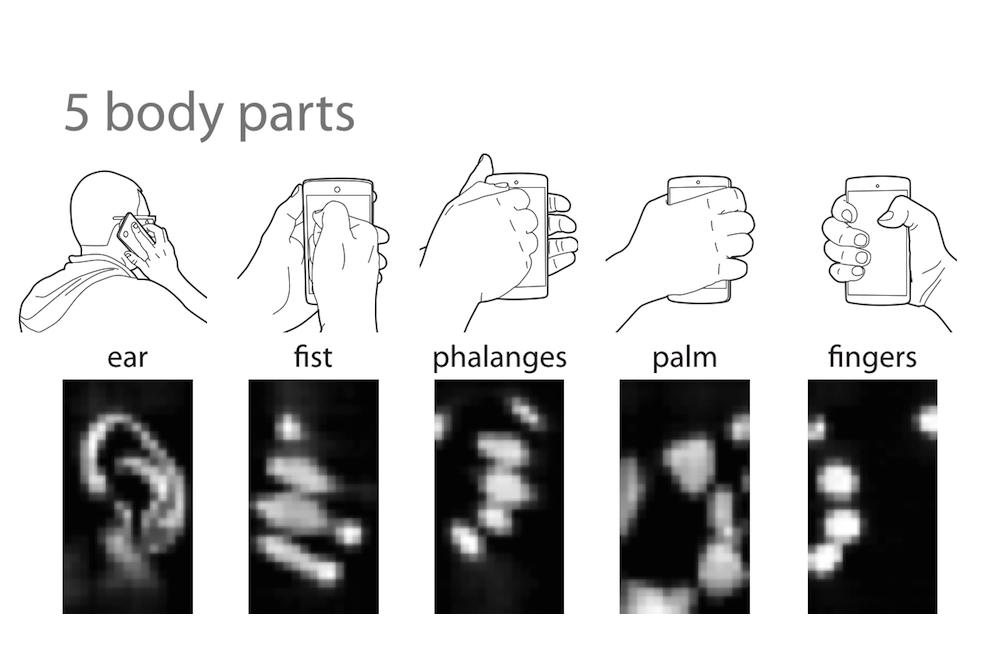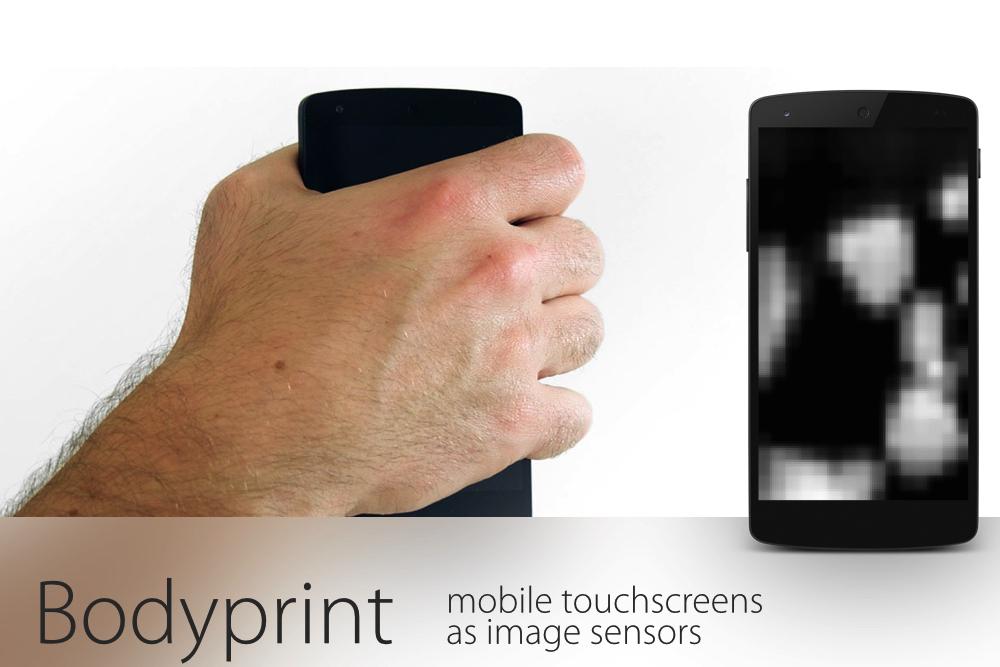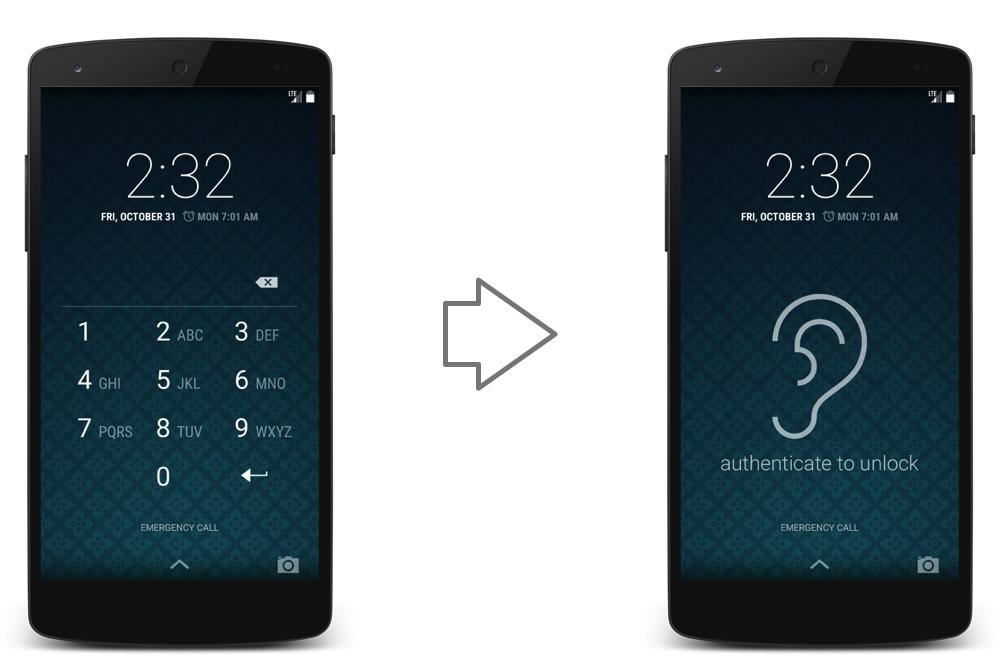The iPhone, the Galaxy S6, and a few other high price smartphones have fingerprint sensors for extra security, and authorization of payments; but the tech is expensive, and therefore hasn’t reached mainstream, lower cost devices yet. A team of researchers at Yahoo Labs have developed Bodyprint, a biometric authentication system which uses your phone’s touchscreen as the scanner. Only it’s not for fingerprints, it’s for ears.
Bodyprint uses the touchscreen’s capacitive sensor in place of a dedicated fingerprint sensor, and doesn’t need any additional hardware, or special sensors to work. This means it could be easily integrated into any phone with a capacitive screen — and that’s almost every phone sold today.
Why can’t Bodyprint be used to scan fingerprints? This is the downside of using the screen — the image sensor just doesn’t have the resolution to capture enough detail to be used for fingerprint identification. The large area makes up for the loss in overall image quality, and in addition to recognizing ears, Bodyprint also looks at palm and finger grip position, a fist, and the phalanges of a hand.
The team demonstrates Bodyprint using a Nexus 5 smartphone. In the accompanying video, holding the phone up to answer a call will activate Bodyprint, which will unlock and connect only if the ear print matches the phone’s owner. Additionally, a dual fist unlock procedure is shown for securing files — meaning secret documents can only be opened and viewed when both parties are present.
How about accuracy? Over the course of 864 individual trials, Bodyprint returned a 99.5 percent precision rate, and a low 7.8 percent rejection rate for ear prints. Other body parts had a slightly higher rejection rate of 26.8 percent. The rejection rates will fall when the image resolution on capacitive sensors increases, and Bodyprint’s special algorithms can be tweaked to lower the rejection rate, but at the expense of precision — something which could be used for accessing less sensitive data.
At the moment, Bodyprint is a research project, and not something ready to be integrated into our smartphones. However, it proves the potential is there for the future, and biometric scanning doesn’t have to be limited to the most expensive devices.






